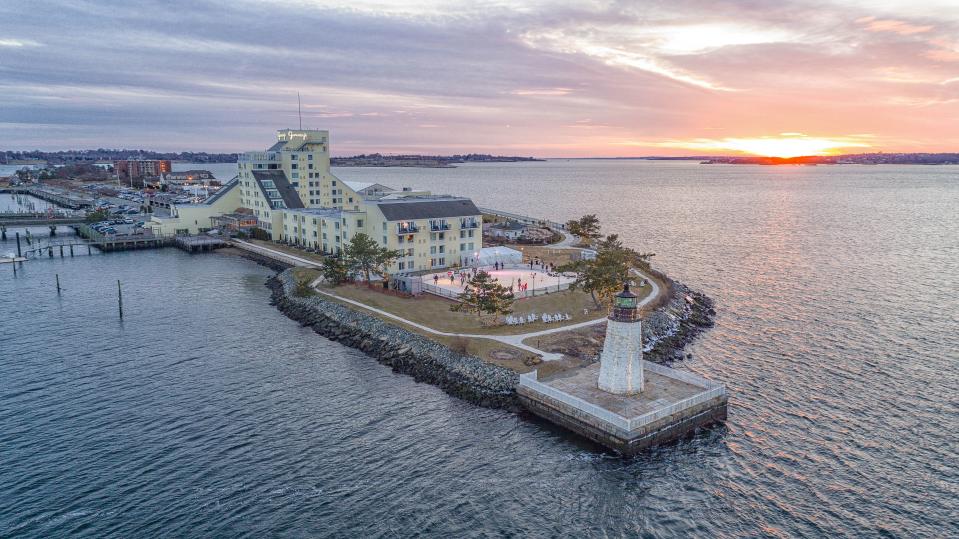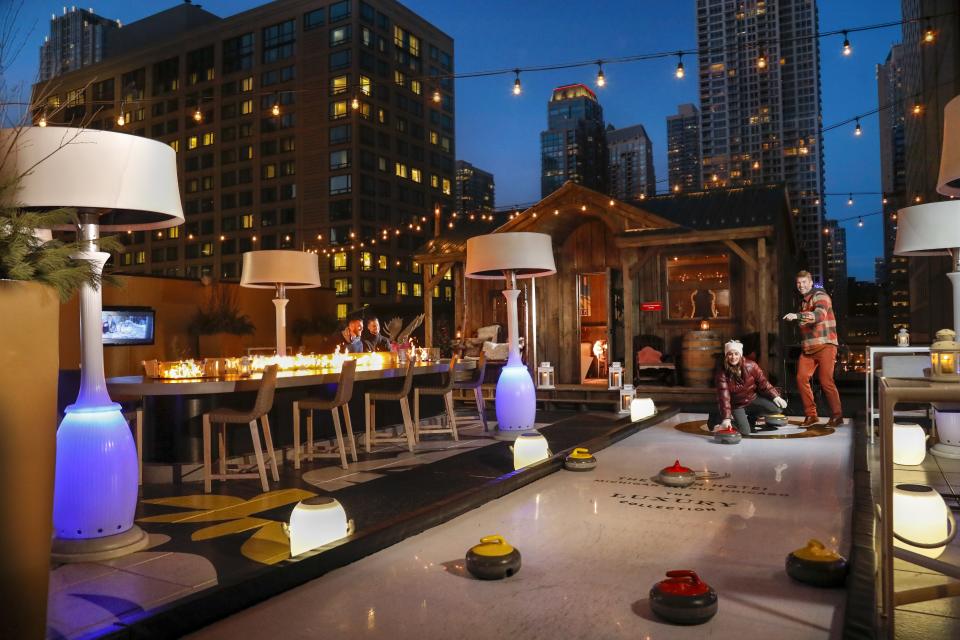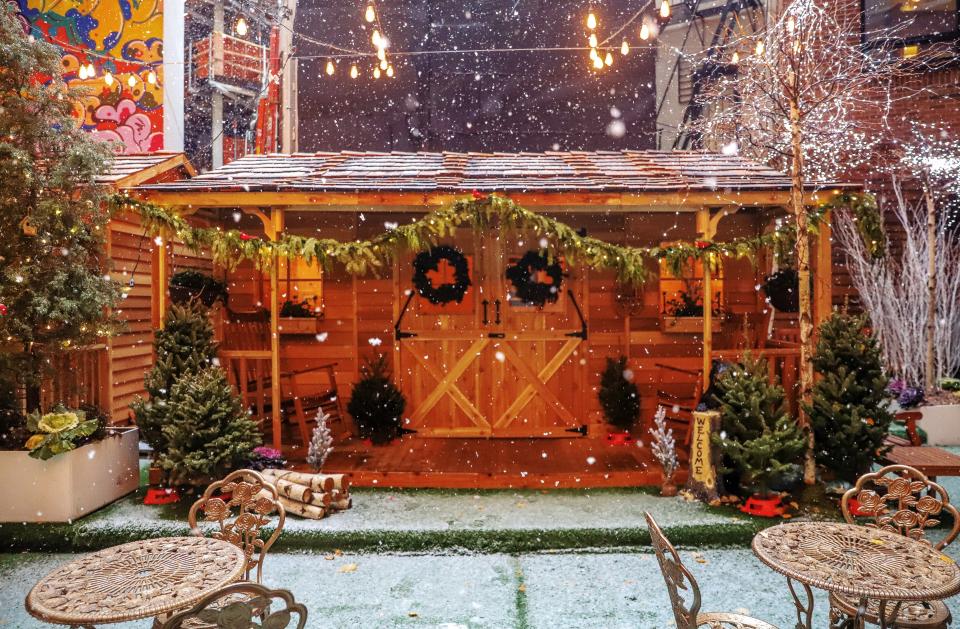How Hotels Use Smart Design to Draw Guests Off-Season
For three months this winter, the waterfront lawn at Gurney’s in Newport, Rhode Island—a summertime seaside wedding hotspot—was transformed into an Arctic wonderland, with an ice-skating rink and a smattering of 10 heated igloos, each with its own multisensory design theme: Tropical Summer, with bold colors and rattan, and Astrology, with quartz accents and velvet pillows. The hotel worked with a creative agency to design domes meant to attract particular audiences—families, couples, groups of female friends—and worked with set designers to execute. And it worked: Guest numbers went up “significantly” from last year, says Gurney’s Resorts Area general manager Michael Nenner, with a waitlist to get in.

Hotels are using design to get creative in the off-season. For one thing, they have to. “Even though fall and spring are most often regarded as Baltimore’s high seasons, anything we can do to enhance the guest experience and further highlight our property as a winter destination is absolutely a priority,” says Ali Lord Pannoni, marketing manager of the Ivy Hotel in Baltimore, which this year transformed its courtyard into a winter garden with rustic-inspired decor, twinkling lights, and draping magnolia branches. Since the Bobby in Nashville announced its own rooftop igloos and cedar cabins with this Instagram post a year ago, the hotel has received an average of 300 phone calls and 150 emails a day, according to Maya Stanic, senior director of branding and marketing. “Messages from guests and locals started coming in August asking if the igloos will be coming back this year and when,” she says. The hotel saw a 57% revenue lift in November and December compared to the year before.

Instagrammability has not a little to do with it, a quality that proves mutually beneficial for both guests and hotels. At Gurney’s, Nenner says the igloos were specifically created with Instagram in mind, and the first post garnered more than 500 inquiries alone. At the Arlo hotels in New York City, pop-up cabins with Pendleton and antler chandeliers make for cozy selfie backdrops; at the custom-designed rooftop curling rink at the Gwen in Chicago, an electric-fireplace-heated rink and sheepskin throws break from the idea that “rooftop season in Chicago is strictly a summer activity,” says hotel spokesperson Jen Spears. In Waldoboro Maine, Tops’l Farm, a camp and farm retreat that offers canvas tent and log cabin accommodations in the warmer months, launched a winter dinner series that transforms its riverside yurt into a gas-lantern-lit Swiss raclette dinner. Meanwhile, at the Ivy, seasonal design elements include cream Matouk blankets draped over chairs, a hand-painted semicircle bar, layered cowhide, and fluffy area rugs. A custom-designed tent has a transparent ceiling and walls, created “so the exterior view would be beautiful,” and ’grammable, “from all angles,” says Pannoni.

Seasonal activations will continue to get more popular—and more creative. The Gurney’s igloos were so popular that the hotel added two for Valentine’s Day. Through March, the Arlo’s pop-up cedar “sleep cabins” will hosts guests for yoga nidra under Blanquil weighted blankets. “At the Bobby, we believe—and can successfully see!—that off-season activations are gaining momentum,” says Stanic. “Providing these experiences as ‘why visit now’ to a destination like Nashville is ultimately what keeps a hotel in the conversation. We ask ourselves, what immersive experience can we offer guests for a taste of Music City without leaving the hotel?”
Originally Appeared on Architectural Digest

